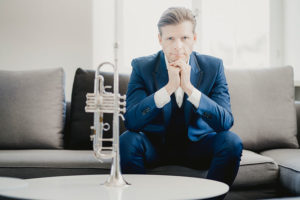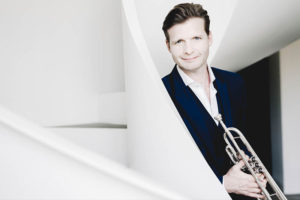Ralph Pyl – Trumpet Interview

Welcome to the show notes for Episode #72 of The Other Side of the Bell – A Trumpet Podcast. This episode features trumpeter Ralph Pyl.
Listen to the trumpet podcast right from your browser: Podcast: Play in new window | Download
This podcast is brought to you by Bob Reeves Brass.
About Ralph Pyl
 Ralph Pyl commenced trumpet at age 12 on the northern beaches of Sydney Australia beginning his career studying and learning with US trumpet players and mentors John Hoffman and Dick Montz. In 1982 Ralph received a scholarship to study under the direction of Don Burrows at the NSW State Conservatorium of Music and at the age of 18 began a professional career with 3 years of touring with Australia’s renowned Daly Wilson Big Band.
Ralph Pyl commenced trumpet at age 12 on the northern beaches of Sydney Australia beginning his career studying and learning with US trumpet players and mentors John Hoffman and Dick Montz. In 1982 Ralph received a scholarship to study under the direction of Don Burrows at the NSW State Conservatorium of Music and at the age of 18 began a professional career with 3 years of touring with Australia’s renowned Daly Wilson Big Band.
Ralph has performed and recorded with many artists both in Australia and overseas including International stars K.C and the Sunshine Band, Boy George and Culture Club, Shirley Bassey, Ronnie Corbett, The Four Tops, The Temptations, Ralph Carmichael, Buddy Greco, The Platters, Sir George Martin, Tom Jones, Bernadette Peters, Michael Crawford, Wayne Newton, Louie Bellson, Bobby Shew, Joe Williams, Al Jarreau, Tim Rice, Harry Connick Jnr, Glenn Close, Michael Ball, Michael Buble, Lorna Luft, Wayne Bergeron, Jerry Lewis, Michael Feinstein, Frankie Valli, Leo Sayer, Il Divo, Megan Hilty, The Glenn Miller Orchestra and Australian National stars James Morrison, Grace Knight, Don Burrows, Anthony Warlow, Marcia Hines, Frank Bennett, Tommy Tycho, Rhonda Burchmore, Marina Prior, Emma Pask, Silverchair, John Foreman, The Black Sorrows and since 1998 has been lead trumpet with Tom Burlinson’s “Frank – The Sinatra Story in Song”. This show has now been widely regarded as one of Australia’s best ever touring productions. For the 2002, 2003 and 2004 Sydney Festivals, Ralph also assembled an Australian All Star Jazz Orchestra for World renowned US composers and arrangers Maria Schneider, Bob Florence and Rob McConnell from the Boss Brass.
Ralph’s credits have also seen him playing in several stage and theatre productions including 42nd Street, Hot Shoe Shuffle, Porgy and Bess, A Chorus Line, Beauty and the Beast, Guys and Dolls, Cats and Fame just to mention a few. He has also appeared on over 150 albums for vocalists, various bands and numerous Australian and International motion picture sound tracks and TV commercials.
Up until 1998 Ralph had been a member of the Channel Nine Midday Show Band with Geoff Harvey and hosts Ray Martin, Derryn Hinch and Kerri-Anne Kennerley. Other TV show bands include playing with the John Foreman Orchestra on Australian Idol for 7 years.
In June 2002, 2003, 2004 and 2005 the “Sydney All Star Big Band” were the winners of the 27th, 28th, 29th and 30th Australian Mo Award for best jazz ensemble of the year.
Ralph is currently working in Sydney and interstate as a freelance trumpet player involved in a number of different projects. He fronts his own bands the “Sydney All Star Big Band”, “Back to Back” and regularly features in a number of James Morrison’s bands.
Ralph Pyl Trumpet Links
Trumpet Podcast Credits
- “A Room with a View“ – composed and performed by Howie Shear
- Audio Engineer – Preston Shepard at SC Sound Labs
- Cover Art – Phil Jordan




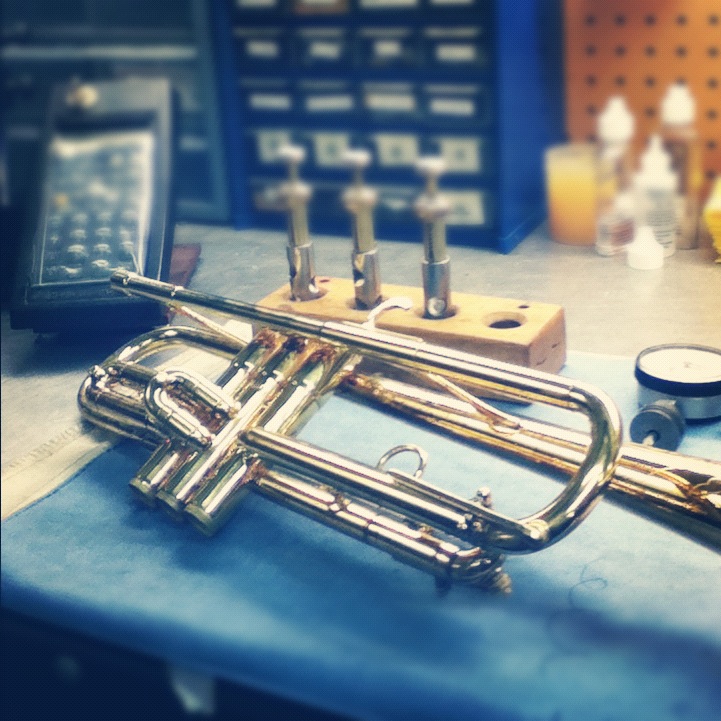




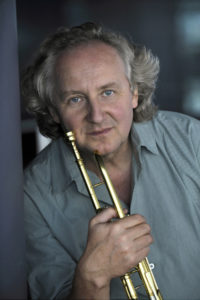
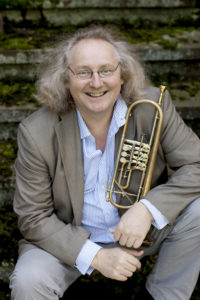 As part of his engagement with contemporary compositions, Reinhold Friedrich premiered a large number of significant works. This includes pieces by Wolfgang Rihm, Carola Bauckholt, Luciano Berio, Edison Denissov, Peter Eötvös, Hans Werner Henze, Adriana Hölszky, Nicolaus A. Huber, Luca Lombardi, Benedict Mason, Sir Peter Maxwell Davis, Hilda Parèdes, Matthias Pintscher, Jan Rääts, Rebecca Saunders, Nina Šenk, EnjottSchneider, Daniel Schnyder, Gerhard Stäbler, Eino Tamberg, Caspar Johannes Walter, Christian Wolff, and Benjamin Yusopov. Solo concerts such as “Eirene” by Herbert Willi (Wergo) and “Nobody knows de trouble I see” by Bernd Alois Zimmermann, whose CD recording won an ECHO Klassik in 1994, form an important part of his broad repertoire.
As part of his engagement with contemporary compositions, Reinhold Friedrich premiered a large number of significant works. This includes pieces by Wolfgang Rihm, Carola Bauckholt, Luciano Berio, Edison Denissov, Peter Eötvös, Hans Werner Henze, Adriana Hölszky, Nicolaus A. Huber, Luca Lombardi, Benedict Mason, Sir Peter Maxwell Davis, Hilda Parèdes, Matthias Pintscher, Jan Rääts, Rebecca Saunders, Nina Šenk, EnjottSchneider, Daniel Schnyder, Gerhard Stäbler, Eino Tamberg, Caspar Johannes Walter, Christian Wolff, and Benjamin Yusopov. Solo concerts such as “Eirene” by Herbert Willi (Wergo) and “Nobody knows de trouble I see” by Bernd Alois Zimmermann, whose CD recording won an ECHO Klassik in 1994, form an important part of his broad repertoire.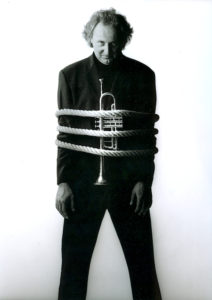 Reinhold Friedrich was awarded another ECHO Klassik for the recording of the “Russian Trumpet Concerts” (MDG) with Göttinger Symphony Orchestra conducted by Christoph-Mathias Mueller. Numerous other CD recordings document his multifaceted work, including the first recording of the trumpet concerto “Pieta” by Christian Jost (Coviello) and the recording of the second Brandenburg Concerto (Sony) with the Berlin Baroque Soloists under Reinhard Goebel, which won the OPUS Classical price of 2018. A recording of Stravinsky’s L’histoire du Soldat (with Isabelle Faust) at the Wigmore Hall London is in the planning stage.
Reinhold Friedrich was awarded another ECHO Klassik for the recording of the “Russian Trumpet Concerts” (MDG) with Göttinger Symphony Orchestra conducted by Christoph-Mathias Mueller. Numerous other CD recordings document his multifaceted work, including the first recording of the trumpet concerto “Pieta” by Christian Jost (Coviello) and the recording of the second Brandenburg Concerto (Sony) with the Berlin Baroque Soloists under Reinhard Goebel, which won the OPUS Classical price of 2018. A recording of Stravinsky’s L’histoire du Soldat (with Isabelle Faust) at the Wigmore Hall London is in the planning stage.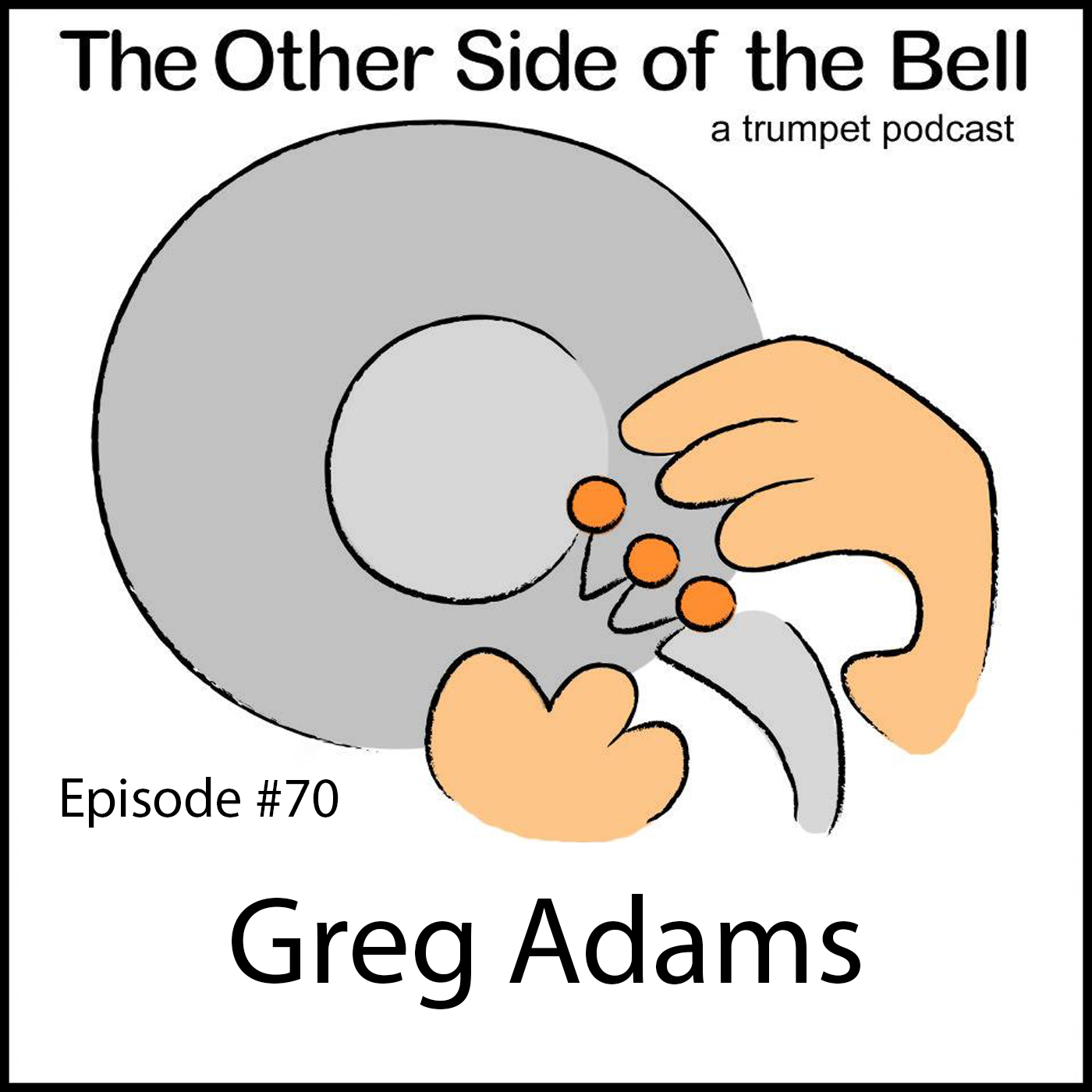
 The sound of Grammy and Emmy nominated trumpeter, arranger Greg Adams is one of the world’s best-known musical signatures. As a founding member of Tower of Power, legendary for his arrangements that made the TOP horn section a sought out entity all its own. With countless collaborations in the studio and live on stage, Adams has made his mark on a broad stretch of today’s musical landscape that includes jazz, pop, rock, R&B, soul, and funk.
The sound of Grammy and Emmy nominated trumpeter, arranger Greg Adams is one of the world’s best-known musical signatures. As a founding member of Tower of Power, legendary for his arrangements that made the TOP horn section a sought out entity all its own. With countless collaborations in the studio and live on stage, Adams has made his mark on a broad stretch of today’s musical landscape that includes jazz, pop, rock, R&B, soul, and funk.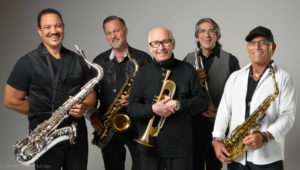 East Bay Soul celebrating their 10th Anniversay this year is the next creative step forward in a career filled with magic moments spanning over four decades, including an International Broadcasting Award from The Hollywood Radio and Television Society. An enduring recording artist and performer, the charismatic trumpeter has earned the respect of his peers and fans alike worldwide.
East Bay Soul celebrating their 10th Anniversay this year is the next creative step forward in a career filled with magic moments spanning over four decades, including an International Broadcasting Award from The Hollywood Radio and Television Society. An enduring recording artist and performer, the charismatic trumpeter has earned the respect of his peers and fans alike worldwide.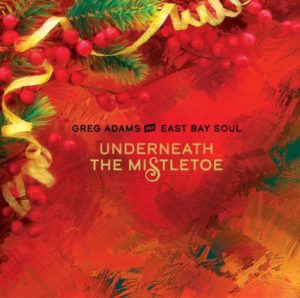 Underneath the Mistletoe marks Greg Adams and East Bay Soul’s 5th studio album and their first Christmas CD as they celebrate their 10thAnniversary. Here, East Bay Soul performs classic Christmas Songs with a mix of Funk Jazz, R&B and Soul. Greg Adams, Grammy and Emmy nominated trumpeter’s gorgeous arrangements herald in the season and the soulful R&B vocal by Darryl Walker caress the timeless lyrics of your favorite holiday music.
Underneath the Mistletoe marks Greg Adams and East Bay Soul’s 5th studio album and their first Christmas CD as they celebrate their 10thAnniversary. Here, East Bay Soul performs classic Christmas Songs with a mix of Funk Jazz, R&B and Soul. Greg Adams, Grammy and Emmy nominated trumpeter’s gorgeous arrangements herald in the season and the soulful R&B vocal by Darryl Walker caress the timeless lyrics of your favorite holiday music.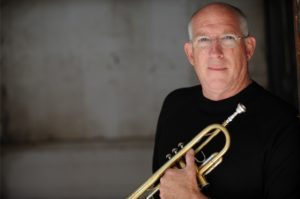 Roy Poper has for more than 30 years maintained an active performing career of a breadth rare among musicians. His engagements span every facet of trumpet performance including symphonic principal player (Los Angeles Chamber Orchestra and L.A. Opera), film studio work (over 500 major motion pictures), chamber music (founding member, The Modern Brass Quintet), and “popular” genres including jazz ensembles, Broadway shows, and even recordings with Frank Zappa and the Mothers of Invention.
Equally respected as a teacher, he was for more than 20 years a member of the faculty of the University of Southern California School of Music prior to moving to Oberlin, OH in 2002 to assume the duties of Associate Professor of Trumpet at the Oberlin Conservatory. His book, Roy Poper’s Guide to the Brasswind Methods of James Stamp (Balquhidder Music), which serves as a companion to James Stamp Warm-ups and Studies (Editions BIM) has become an acclaimed addition to the trumpet method-book literature, thoroughly explaining how to execute and effeciently utilize James Stamps’ teaching methods.
He continues to be in demand as a performer, performing frequently in the greater Cleveland Area and Los Angeles. He has commissioned numerous works, some of which appear on his forthcoming CD, L.A. Trumpet Works. Roy has been recorded on the Crystal, Orion, Nonesuch, and Dorian labels.
Roy Poper has for more than 30 years maintained an active performing career of a breadth rare among musicians. His engagements span every facet of trumpet performance including symphonic principal player (Los Angeles Chamber Orchestra and L.A. Opera), film studio work (over 500 major motion pictures), chamber music (founding member, The Modern Brass Quintet), and “popular” genres including jazz ensembles, Broadway shows, and even recordings with Frank Zappa and the Mothers of Invention.
Equally respected as a teacher, he was for more than 20 years a member of the faculty of the University of Southern California School of Music prior to moving to Oberlin, OH in 2002 to assume the duties of Associate Professor of Trumpet at the Oberlin Conservatory. His book, Roy Poper’s Guide to the Brasswind Methods of James Stamp (Balquhidder Music), which serves as a companion to James Stamp Warm-ups and Studies (Editions BIM) has become an acclaimed addition to the trumpet method-book literature, thoroughly explaining how to execute and effeciently utilize James Stamps’ teaching methods.
He continues to be in demand as a performer, performing frequently in the greater Cleveland Area and Los Angeles. He has commissioned numerous works, some of which appear on his forthcoming CD, L.A. Trumpet Works. Roy has been recorded on the Crystal, Orion, Nonesuch, and Dorian labels.

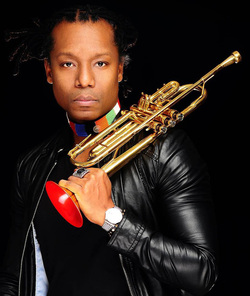 Dontae Winslow is one of the most versatile in-demand trumpeter/arranger/composers on the Hollywood music scene. His trumpet/arranging/songwriting can be heard on classics such as Kanye West’s grammy winning “We Major” from the multi-platinum Late Registration, Jayz’s “I Made it”, Dr. Dre’s Compton Movie Soundtrack (where Dontae composed the iconic fanfare intro and played solos throughout the album). The Final track “Talking to My Diary” uses a 2minute jazz trumpet solo after Dre’s verse over a hiphop song which was Dontae’s 1st take. He also plays on Kendrick Lamar’s “County Building Blues”, Snoop Dog’s Ego Trippin, Aloe Blacc’s smash song “I’m the Man”, and Beyonce’s Huge Ego among countless other hits. He has toured in the band of Justin Timberlake since 2013 where he performs in the Netflix Movie “JT & The Tennessee Kids. Dontae has performed in front of millions in the 2020 Experience World tour, Legends of Summer World Tour, and Man of The Woods World Tour. He has alo been on the bands of Lady Antebellum (You Look Good), D’angelo (Vodoo), Kamasi Washington, Raphael Saadiq, Lauryn Hill, Jill Scott, and most recently has been the arranger, orchestrator, and Music director for Queen Latifah.
Dontae Winslow is one of the most versatile in-demand trumpeter/arranger/composers on the Hollywood music scene. His trumpet/arranging/songwriting can be heard on classics such as Kanye West’s grammy winning “We Major” from the multi-platinum Late Registration, Jayz’s “I Made it”, Dr. Dre’s Compton Movie Soundtrack (where Dontae composed the iconic fanfare intro and played solos throughout the album). The Final track “Talking to My Diary” uses a 2minute jazz trumpet solo after Dre’s verse over a hiphop song which was Dontae’s 1st take. He also plays on Kendrick Lamar’s “County Building Blues”, Snoop Dog’s Ego Trippin, Aloe Blacc’s smash song “I’m the Man”, and Beyonce’s Huge Ego among countless other hits. He has toured in the band of Justin Timberlake since 2013 where he performs in the Netflix Movie “JT & The Tennessee Kids. Dontae has performed in front of millions in the 2020 Experience World tour, Legends of Summer World Tour, and Man of The Woods World Tour. He has alo been on the bands of Lady Antebellum (You Look Good), D’angelo (Vodoo), Kamasi Washington, Raphael Saadiq, Lauryn Hill, Jill Scott, and most recently has been the arranger, orchestrator, and Music director for Queen Latifah. After touring with JT Dontae released a summer party anthem sure to get you moving entitled “Shit Yeah” with him producing the TNkids live band along with analog synths and sing rapping the verse/choruses.
After touring with JT Dontae released a summer party anthem sure to get you moving entitled “Shit Yeah” with him producing the TNkids live band along with analog synths and sing rapping the verse/choruses. His first private lessons were with Jari Villanueva, then continued trumpet and learned to read music from Carolyn Foulkes in high school. At The New School Dontae studied with Roy Hargrove who would become a life musical mentor until his passing. In college at the Peabody Conservatory of the Johns Hopkins University Dontae studied with Wayne Cameron for undergrad, and Langston Fitzgerald III for graduate in classical trumpet performance. He has always had great jazz lessons from Maryland based jazz giant trumpeter Tom Williams and has been mentored by Jon Faddis and Wallace Roney. As a recipient of the Thelonious Monk Institute of Jazz Fellowship at USC Dontae studied jazz trumpet, composition, and film scoring with jazz legend trumpeter/composer Terence Blanchard. Also at USC he studied with jazz legend Bobby Shew, string arranger Jeremy Lubbock, Studio trumpet legend Gary Grant, and Gospel Composer Margaret Douroux.
His first private lessons were with Jari Villanueva, then continued trumpet and learned to read music from Carolyn Foulkes in high school. At The New School Dontae studied with Roy Hargrove who would become a life musical mentor until his passing. In college at the Peabody Conservatory of the Johns Hopkins University Dontae studied with Wayne Cameron for undergrad, and Langston Fitzgerald III for graduate in classical trumpet performance. He has always had great jazz lessons from Maryland based jazz giant trumpeter Tom Williams and has been mentored by Jon Faddis and Wallace Roney. As a recipient of the Thelonious Monk Institute of Jazz Fellowship at USC Dontae studied jazz trumpet, composition, and film scoring with jazz legend trumpeter/composer Terence Blanchard. Also at USC he studied with jazz legend Bobby Shew, string arranger Jeremy Lubbock, Studio trumpet legend Gary Grant, and Gospel Composer Margaret Douroux.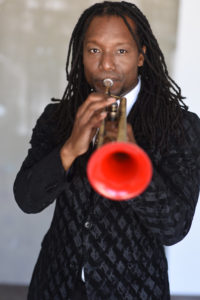 Dontae has produced songs for platinum artists Snoop, Dr. Dre, Avant, Mary Mary, and Keyshia Cole. As an arranger he has orchestrated/arranged and played trumpet in the show for Queen Latifah’s debut concert with the Boston Pops, and recently their 2019 Fourth of July Summer Holiday Concert series. Dontae is influenced by all styles of music especially European classical composers Shostakovich, Mahler, Stravinsky, Rachmaninoff and Chopin. In his playing you can hear his love for the soul and swag of Lee Morgan, the harmony of Woody Shaw, the pathos of Roy Hargrove, and the elegance of Miles Davis.
Dontae has produced songs for platinum artists Snoop, Dr. Dre, Avant, Mary Mary, and Keyshia Cole. As an arranger he has orchestrated/arranged and played trumpet in the show for Queen Latifah’s debut concert with the Boston Pops, and recently their 2019 Fourth of July Summer Holiday Concert series. Dontae is influenced by all styles of music especially European classical composers Shostakovich, Mahler, Stravinsky, Rachmaninoff and Chopin. In his playing you can hear his love for the soul and swag of Lee Morgan, the harmony of Woody Shaw, the pathos of Roy Hargrove, and the elegance of Miles Davis.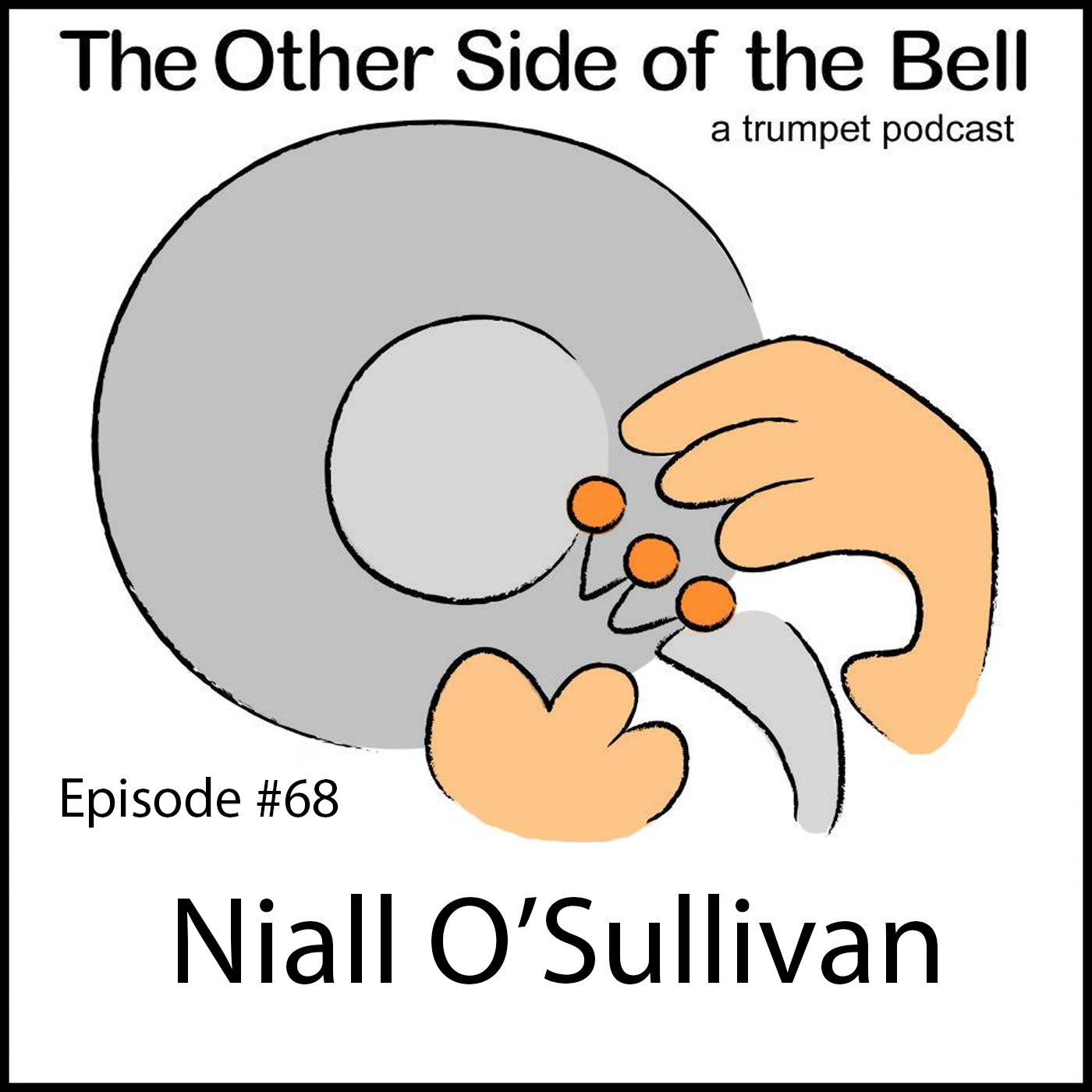
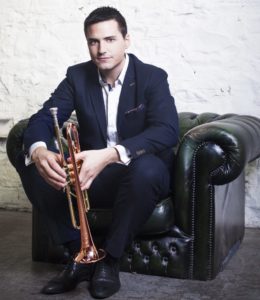 Internationally acclaimed cross-genre trumpeter Niall O’Sullivan has performed all over the world, from orchestral playing to his solo theatre show. Niall has performed in some of the world’s most stunning venues throughout Ireland, Europe, Asia and the USA.
Internationally acclaimed cross-genre trumpeter Niall O’Sullivan has performed all over the world, from orchestral playing to his solo theatre show. Niall has performed in some of the world’s most stunning venues throughout Ireland, Europe, Asia and the USA. When the trumpet world got word of his growing profile as a performer and recording artist, Niall became a performing artist for Schilke Trumpets, Chicago exclusively. This relationship has seen Niall represent Schilke across the globe, from Dublin to Los Angeles.
When the trumpet world got word of his growing profile as a performer and recording artist, Niall became a performing artist for Schilke Trumpets, Chicago exclusively. This relationship has seen Niall represent Schilke across the globe, from Dublin to Los Angeles.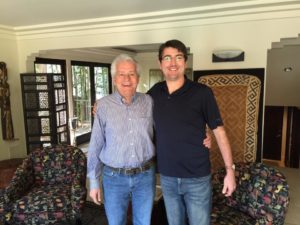
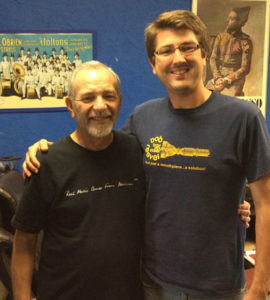

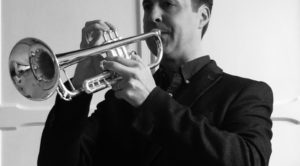 John Hutchinson is a trumpeter, arranger, composer, teacher and blogger. Graduating from the Royal College of Music, London in 1999, he began his freelance career working with many of the UK’s major orchestras as well as recording and performing with major international pop acts such as Joss Stone and Bjork.
John Hutchinson is a trumpeter, arranger, composer, teacher and blogger. Graduating from the Royal College of Music, London in 1999, he began his freelance career working with many of the UK’s major orchestras as well as recording and performing with major international pop acts such as Joss Stone and Bjork. These days, John concentrates mainly on his media composition and production, brass and jazz arranging, and his trumpet teaching at some of the UK’s top schools. Having worked alongside numerous trumpet manufacturers over the years he also now engages with over 50,000 trumpeters around the world each month through his specialist trumpet website, MouthpieceOnline.com.
These days, John concentrates mainly on his media composition and production, brass and jazz arranging, and his trumpet teaching at some of the UK’s top schools. Having worked alongside numerous trumpet manufacturers over the years he also now engages with over 50,000 trumpeters around the world each month through his specialist trumpet website, MouthpieceOnline.com.
 Hub van Laar founded his company in 1990 in Margraten, near Maastricht, on the border triangle to the Netherlands, Germany and Belgium. Beginning as a workshop for brass wind instruments, the company expanded rapidly under the direction of Hub van Laar and Heidrun Jöchner to become an enterprise of world repute.
Hub van Laar founded his company in 1990 in Margraten, near Maastricht, on the border triangle to the Netherlands, Germany and Belgium. Beginning as a workshop for brass wind instruments, the company expanded rapidly under the direction of Hub van Laar and Heidrun Jöchner to become an enterprise of world repute.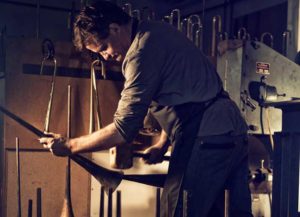 A new trumpet or flugelhorn is certainly not something one buys every day, and musicians develop a special relationship with their instrument. This is why Hub van Laar attaches great importance to individual and intensive contact with his customers. Over the years Van Laar has built up a wide range of trumpets and flugelhorns with all the technical requirements needed for all kinds of musicians and for every kind of music. These instruments were created in close cooperation with a number of musicians and have been continually improved, ensuring that the majority of customers will find “their” perfect trumpet or flugelhorn among them.
A new trumpet or flugelhorn is certainly not something one buys every day, and musicians develop a special relationship with their instrument. This is why Hub van Laar attaches great importance to individual and intensive contact with his customers. Over the years Van Laar has built up a wide range of trumpets and flugelhorns with all the technical requirements needed for all kinds of musicians and for every kind of music. These instruments were created in close cooperation with a number of musicians and have been continually improved, ensuring that the majority of customers will find “their” perfect trumpet or flugelhorn among them.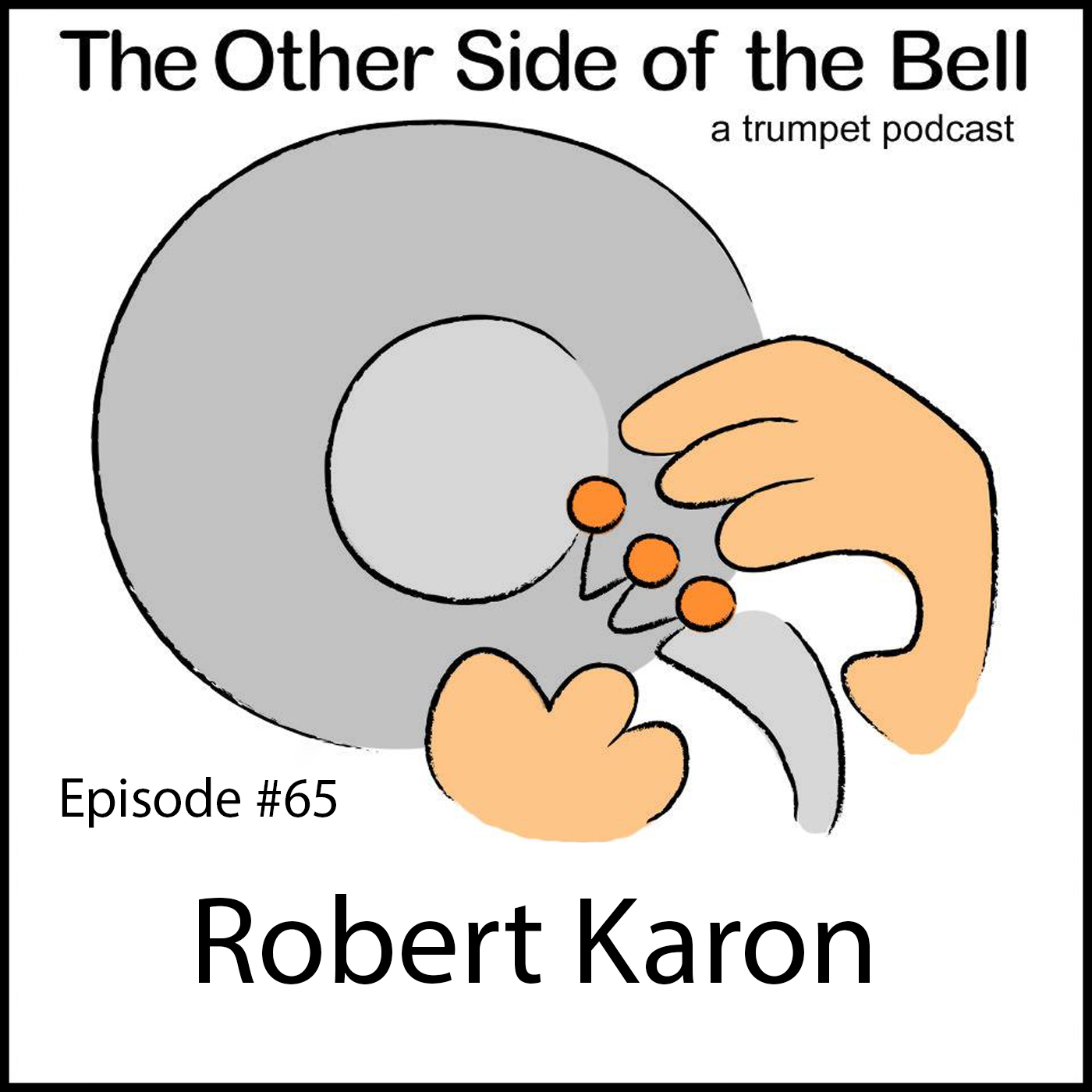
 A native of New Orleans, Robert Karon received his Bachelor of Arts cum laude in Music from UCLA and Master of Music degree from the Juilliard School in New York City. He was the recipient of the Longy Award for achievement in Solfege. His teachers include Robert DiVall, Irving Bush, William Vacchiano, and Arnold Jacobs. Proficient in three languages, Karon toured South America, the Far East, and Europe during his two years with the Mexico City Philharmonic and played first trumpet with the Maracaibo Symphony Orchestra in Venezuela.
A native of New Orleans, Robert Karon received his Bachelor of Arts cum laude in Music from UCLA and Master of Music degree from the Juilliard School in New York City. He was the recipient of the Longy Award for achievement in Solfege. His teachers include Robert DiVall, Irving Bush, William Vacchiano, and Arnold Jacobs. Proficient in three languages, Karon toured South America, the Far East, and Europe during his two years with the Mexico City Philharmonic and played first trumpet with the Maracaibo Symphony Orchestra in Venezuela.
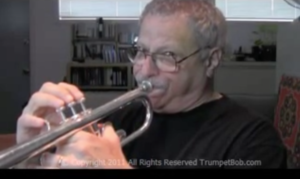 Bob Karon’s latest endeavor is his educational website
Bob Karon’s latest endeavor is his educational website 
